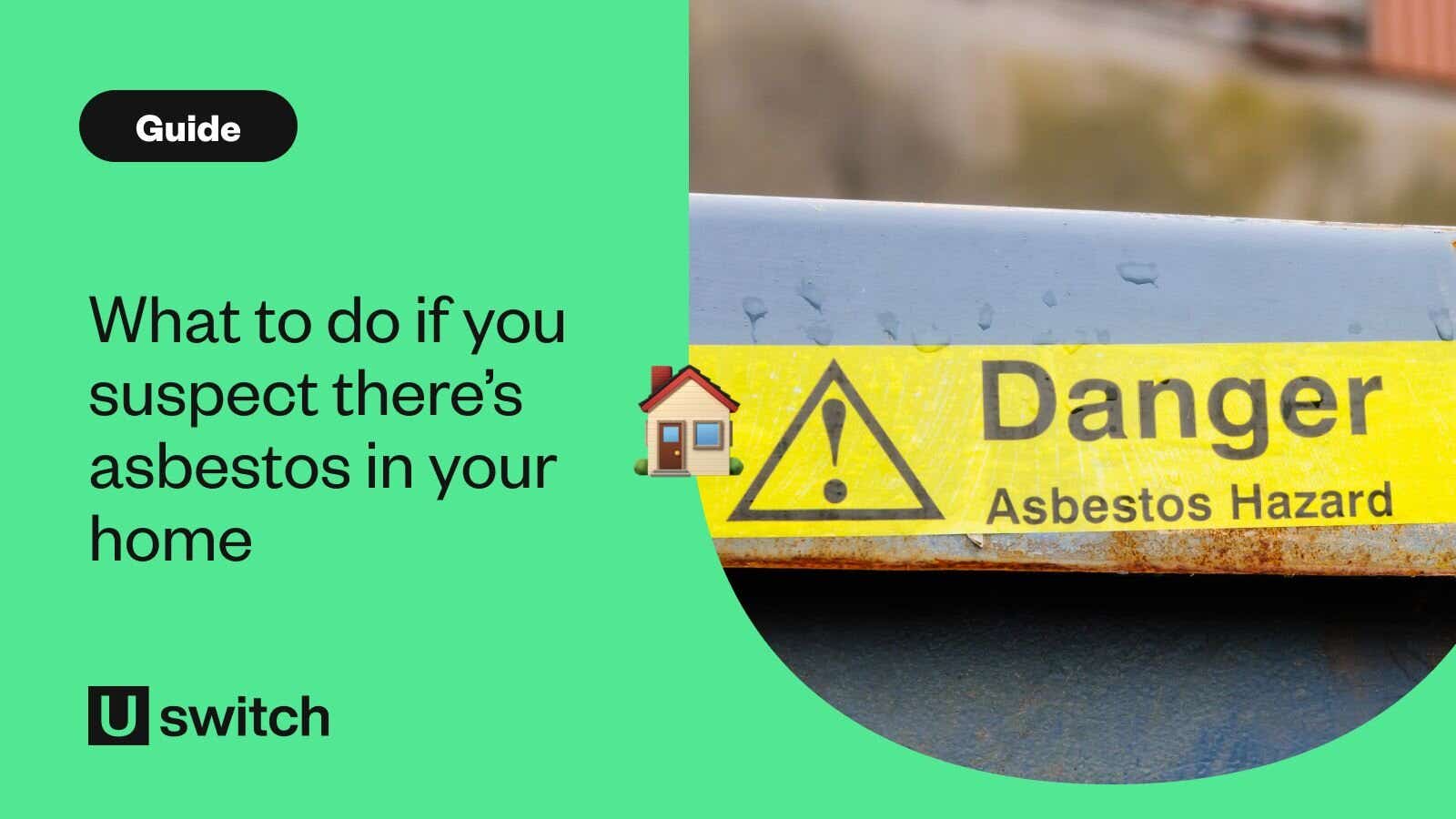What to do if you suspect there’s asbestos in your home


What is asbestos?
Asbestos is a group of naturally occurring minerals made up of tiny fibres. It’s heat-resistant and tough and was once widely used in building materials, especially between the 1930s and 1980s.
When asbestos is damaged or disturbed, it can release fine fibres into the air. Breathing in these fibres over time has been linked to serious health problems, including lung disease and cancer, often many years after exposure.
Why do some houses contain asbestos?
If your home was built or renovated before 2000, it could still contain asbestos. That’s because it was a popular choice for things like insulation, roofing, floor tiles and even textured ceiling coatings.
It wasn’t until the dangers became clearer that the UK banned asbestos in 1999. So unless your home has had a full refurbishment since then, there’s a chance asbestos materials may still be present, often out of sight and undisturbed.
Where in the home is asbestos likely to be?
You can’t always tell if something contains asbestos just by looking at it. The fibres are microscopic and are usually mixed into other materials.
That said, here are some of the places where asbestos is most commonly found:
- Artex or textured coatings on ceilings and walls
- Pipe lagging and boiler insulation
- Roof panels, soffits and guttering
- Ceiling and floor tiles, especially vinyl tiles
- Cement panels behind fireplaces or in airing cupboards
- Spray coatings on steel beams or concrete ceilings
- Older fuse boxes and electrical insulation
- Garage roofs or shed panels
What does asbestos look like?
On its own, asbestos looks like a soft, fluffy material, almost like a cobweb or felt. But in homes, it’s often hidden inside other products, making it hard to spot. Common materials that may contain asbestos can look like ordinary cement boards, vinyl tiles or even pebbledash coatings.
If you're unsure, the safest option is always to get it tested by a licensed asbestos professional.
Does asbestos need to be removed?
Not always. If asbestos-containing materials are in good condition and aren’t being disturbed, it might be safer to leave them alone.
It can be dangerous when the material is damaged, whether that’s from wear and tear or during DIY or building work. If asbestos becomes crumbly, cracked or broken, it can release fibres into the air. That’s when removal or repair might be needed.
It's worth getting advice before doing any work near suspected asbestos. Never try to remove asbestos yourself; it’s dangerous without the right training and equipment, and it's best left to the professionals.
How do I deal with asbestos in my home?
If you've carried out maintenance checks and think you’ve found asbestos:
- Stop work immediately. Don’t drill, cut, sand or disturb the material.
- Keep the area clear. Close off the space if you can, and avoid touching it.
- Contact a licensed asbestos surveyor. They can carry out tests to confirm if it’s asbestos.
- Get a risk assessment. If asbestos is present, you’ll be advised on the safest course of action, which could include sealing, enclosing or removing it.
- Only use licensed professionals for removal. They’ll use specialist equipment to safely remove and dispose of it.
You can find a licensed contractor through the Health and Safety Executive (HSE) or by looking for UKAS-accredited surveyors.
Will asbestos removal be covered by my home insurance?
It can be difficult to make a claim, as home insurance usually doesn’t cover the cost of asbestos removal as standard.
However, if your property is damaged unexpectedly, like during a fire, flood or storm, and that damage disturbs asbestos, your buildings insurance may help with repair or clean-up costs.
To find out for sure:
- Check your policy for accidental damage cover
- Read the exclusions carefully
- Speak to your insurer if you’re planning any major work
Asbestos can feel like a scary topic, the key is not to disturb it and to bring in the experts when needed. If you’re planning work or just want reassurance, book a survey.
Compare home insurance quotes
See a range of home insurance quotes in just a few minutes when you compare with Uswitch
FAQs
Can I carry out building work or DIY if my home has asbestos?
You should not do DIY or building work if you suspect there’s asbestos. Drilling or damaging asbestos can release harmful fibres. Always get a professional asbestos survey before you start any renovations.
Can I continue living in my home if it has asbestos?
Yes, you can usually stay in your home if asbestos is present but undisturbed. Asbestos only becomes dangerous when it's damaged or disturbed, so monitoring and leaving it alone is often the safest approach.
How do I check for asbestos in my home?
To check for asbestos in your home, you’ll need a licensed asbestos surveyor. They can take samples and safely identify whether materials contain asbestos — DIY tests aren’t recommended.
Who do I contact to remove asbestos?
Only licensed asbestos contractors should remove asbestos. You can find approved professionals through the HSE website or by looking for UKAS-accredited surveyors and removal companies.
How much does asbestos removal cost?
Asbestos removal costs vary depending on how much needs removing and where it's located. Small jobs might cost a few hundred pounds, while larger removals can run into the thousands. Always get a few quotes and ask for proof of licensing.